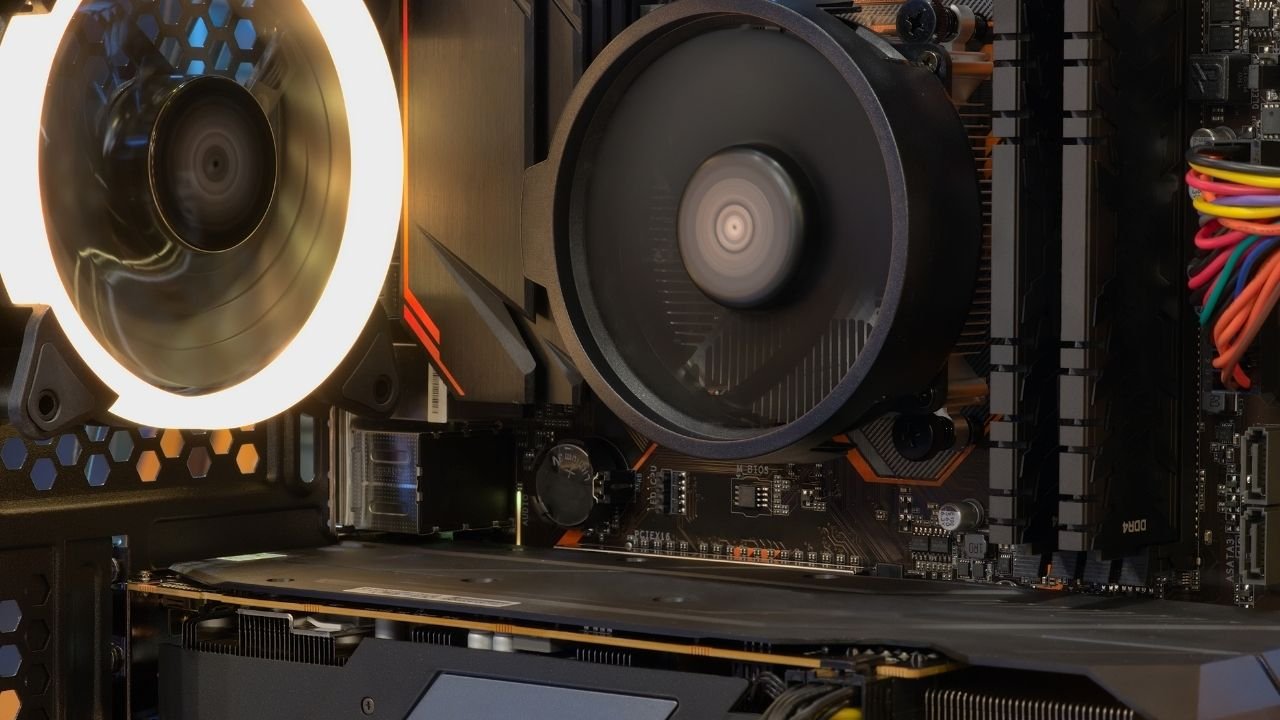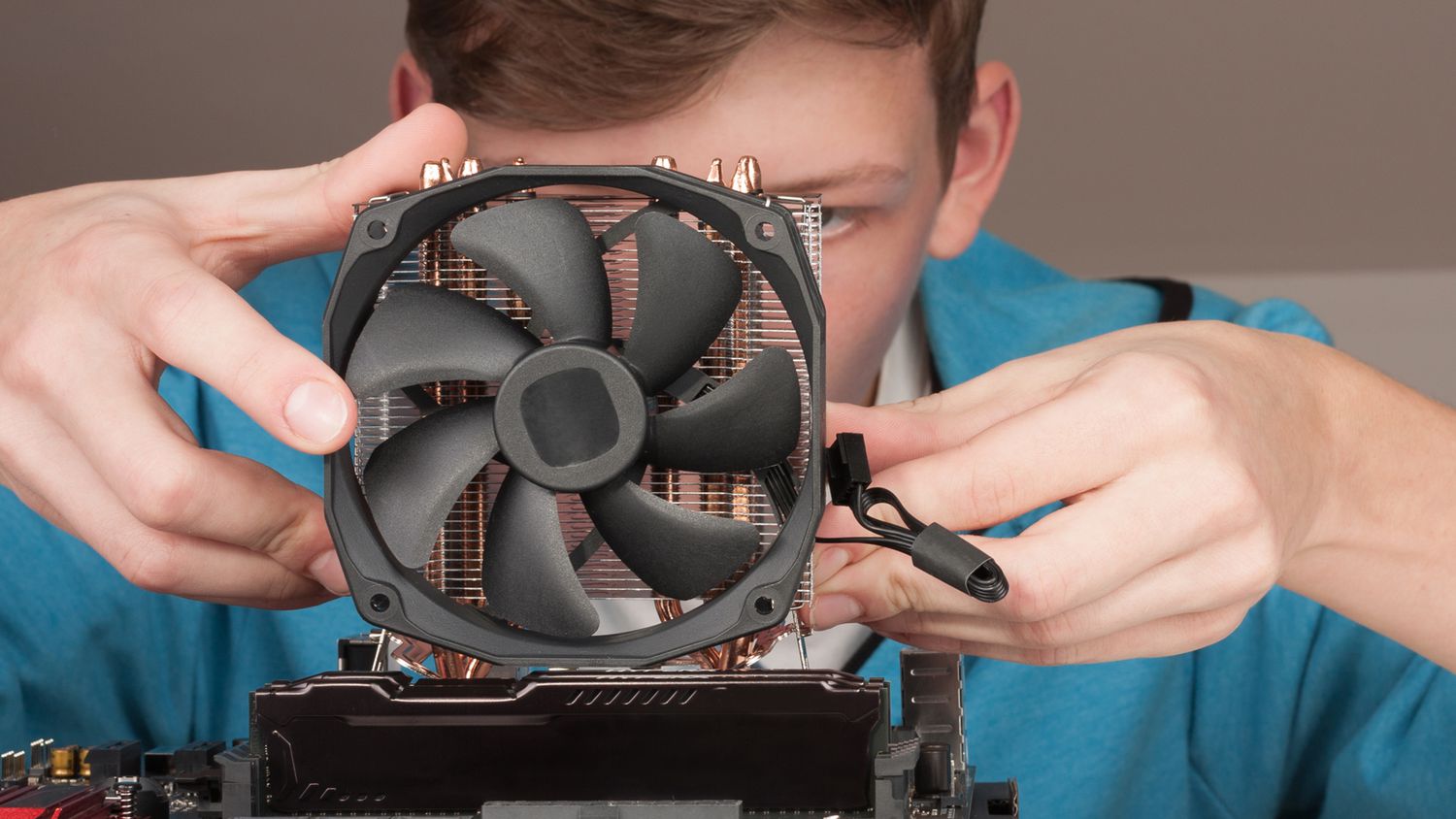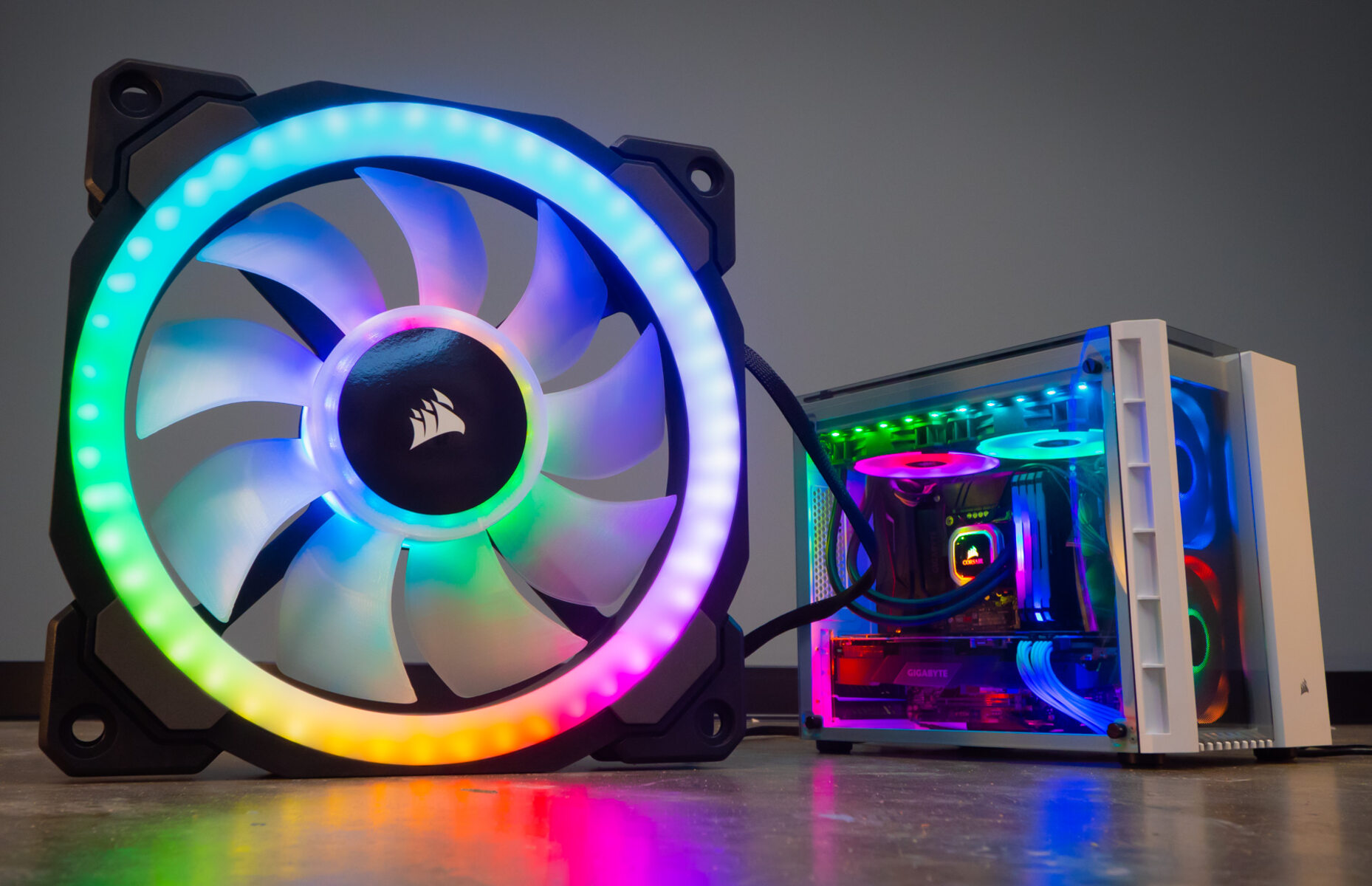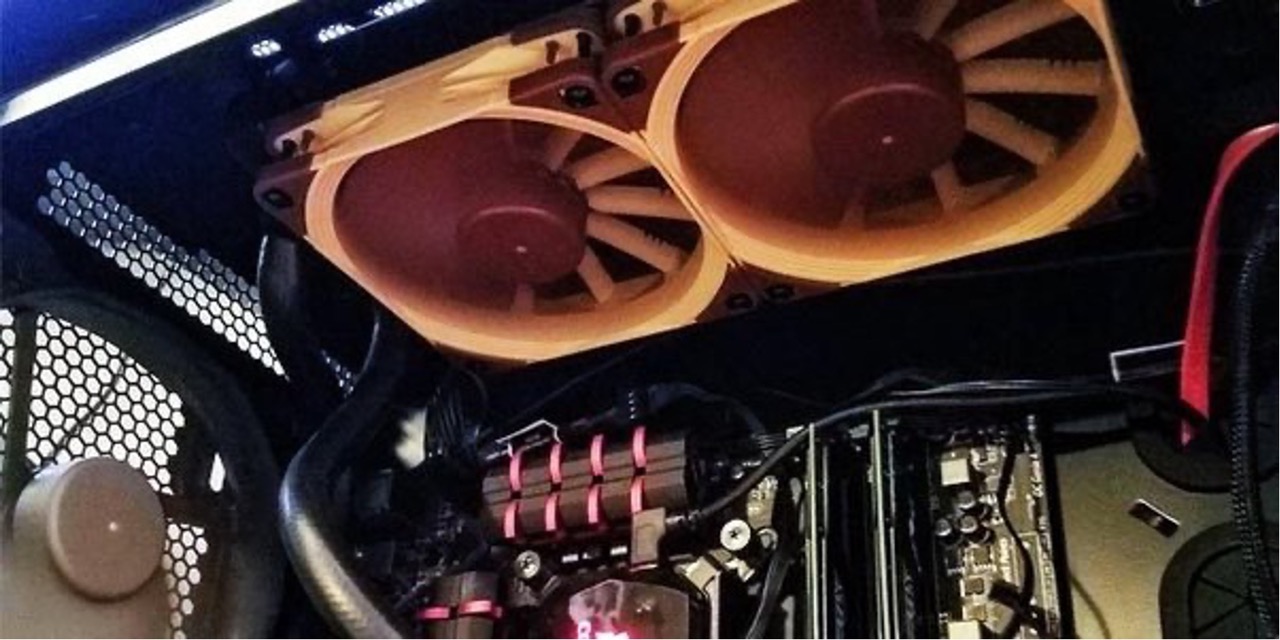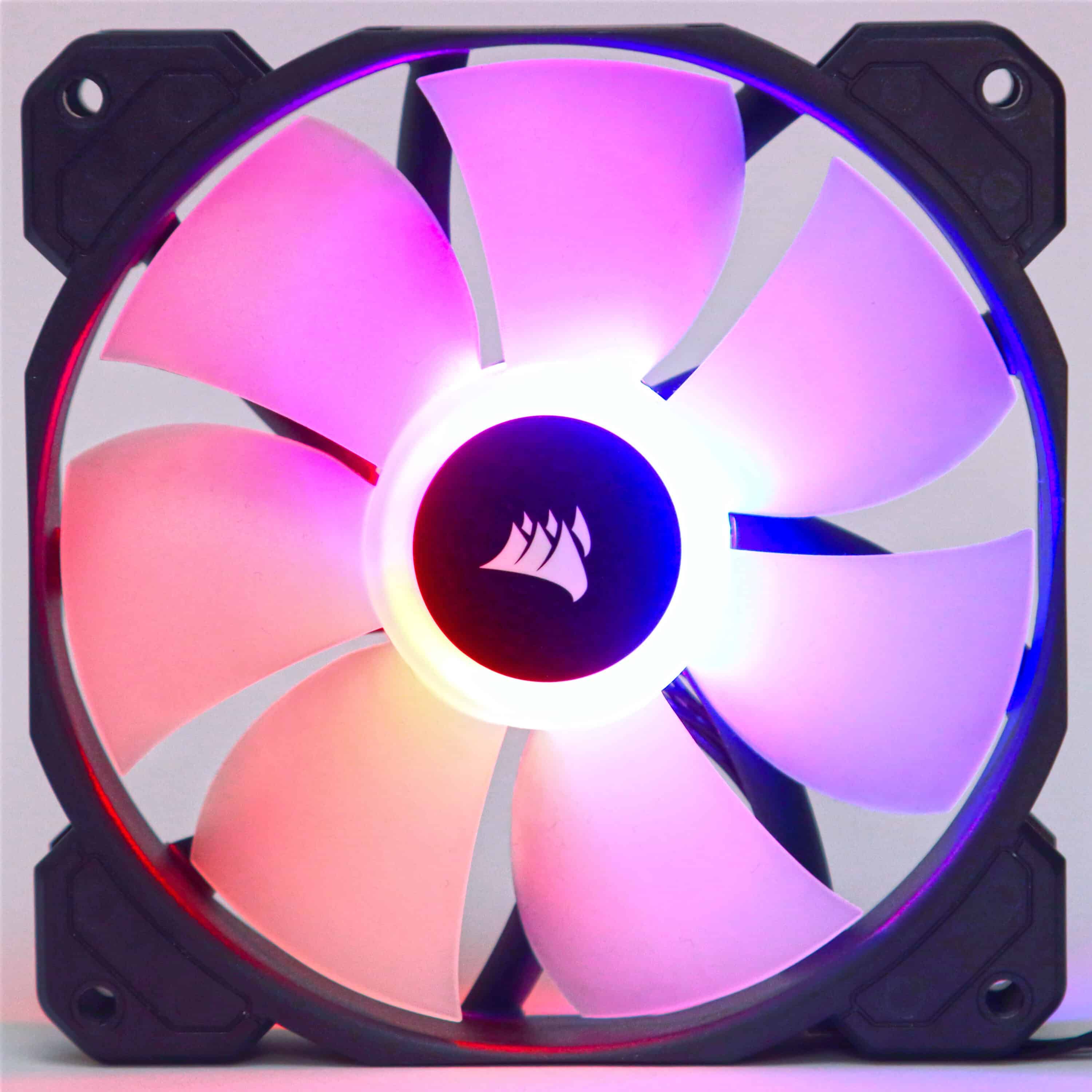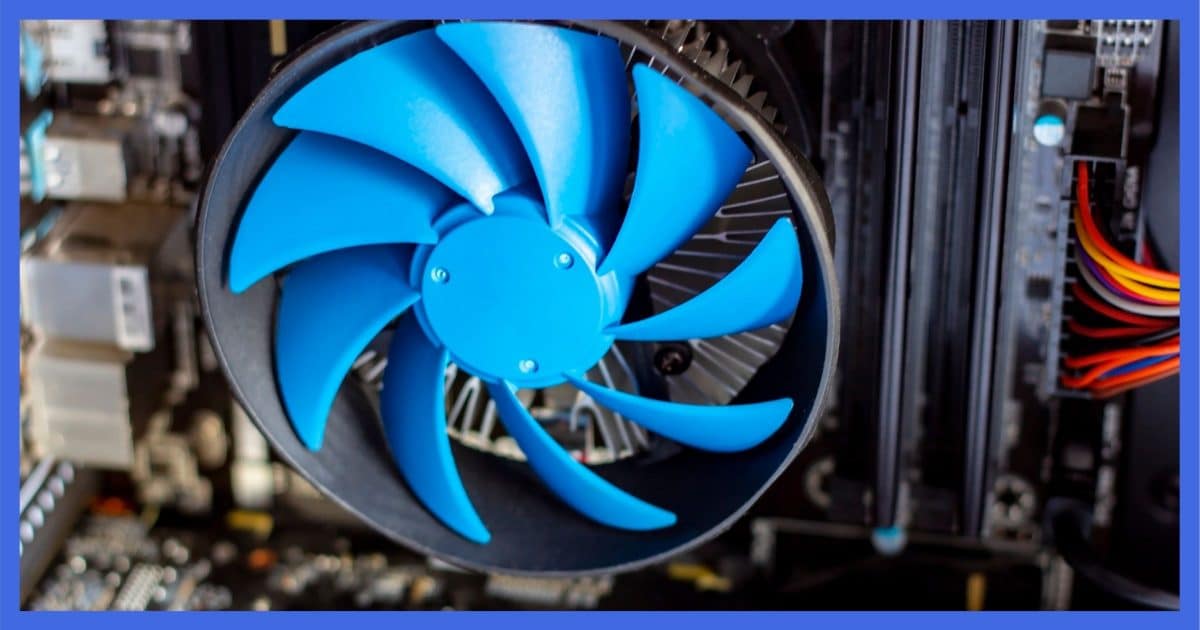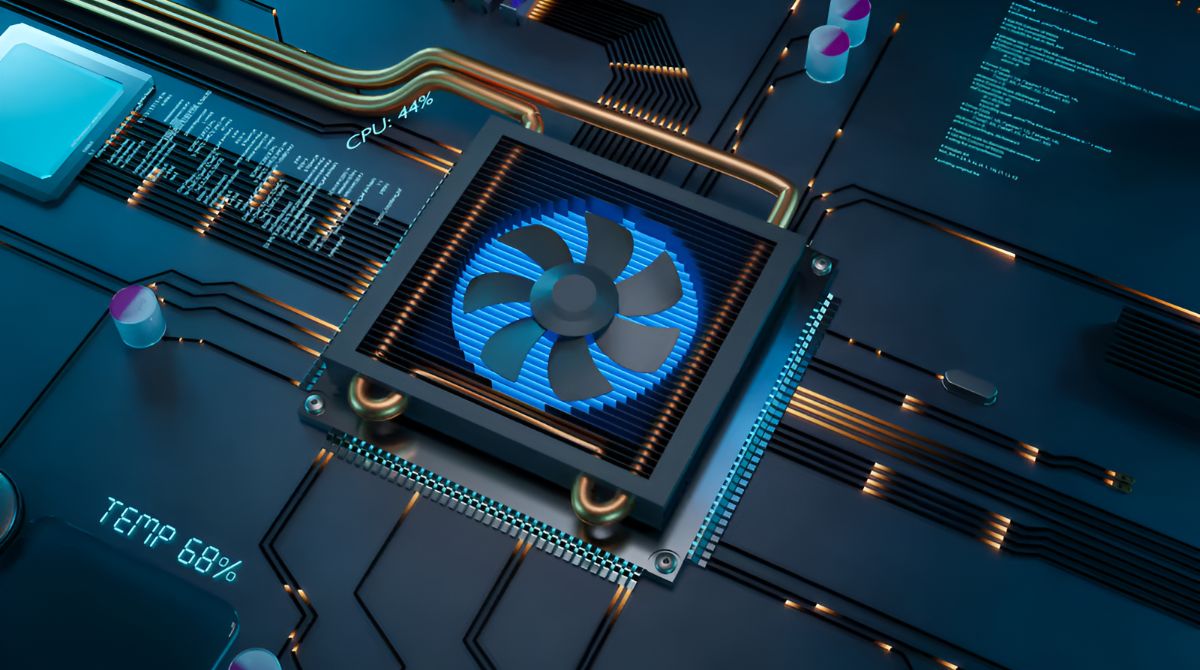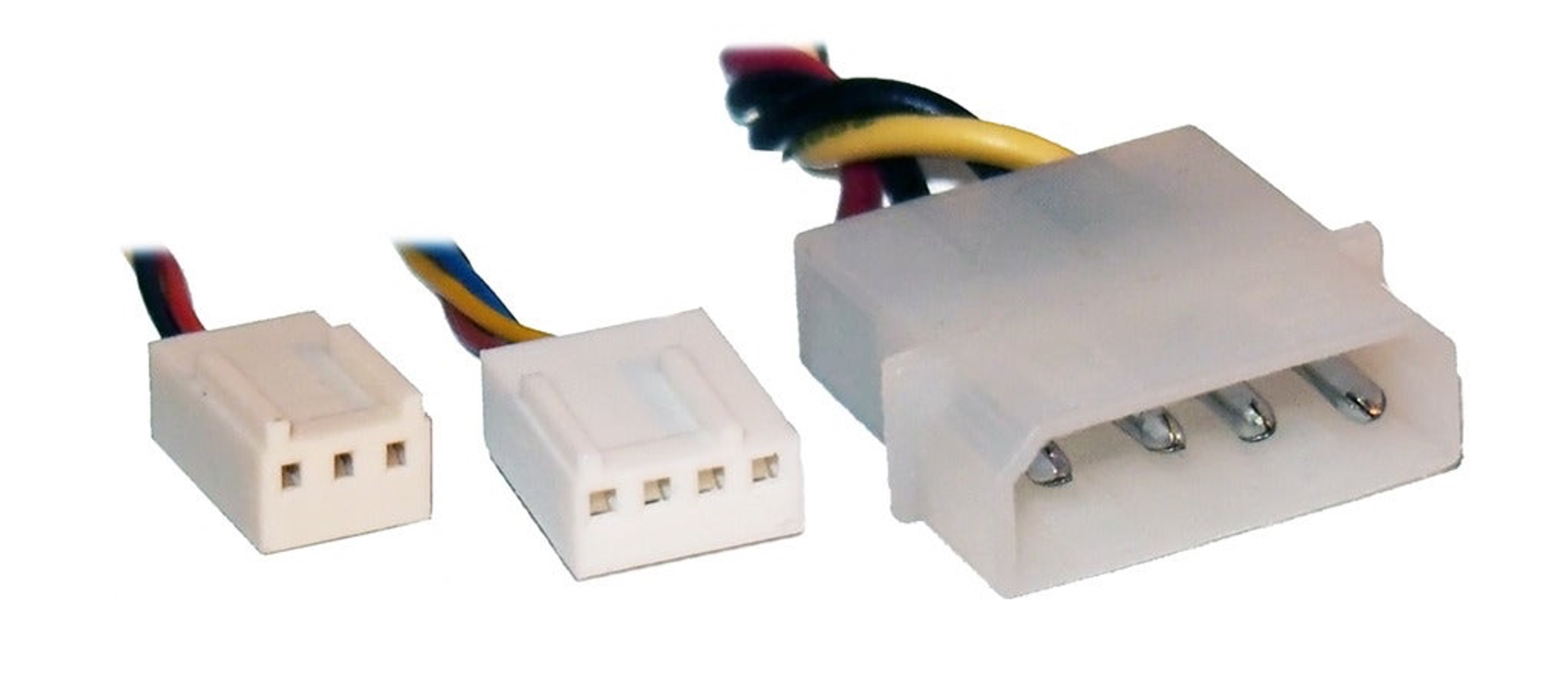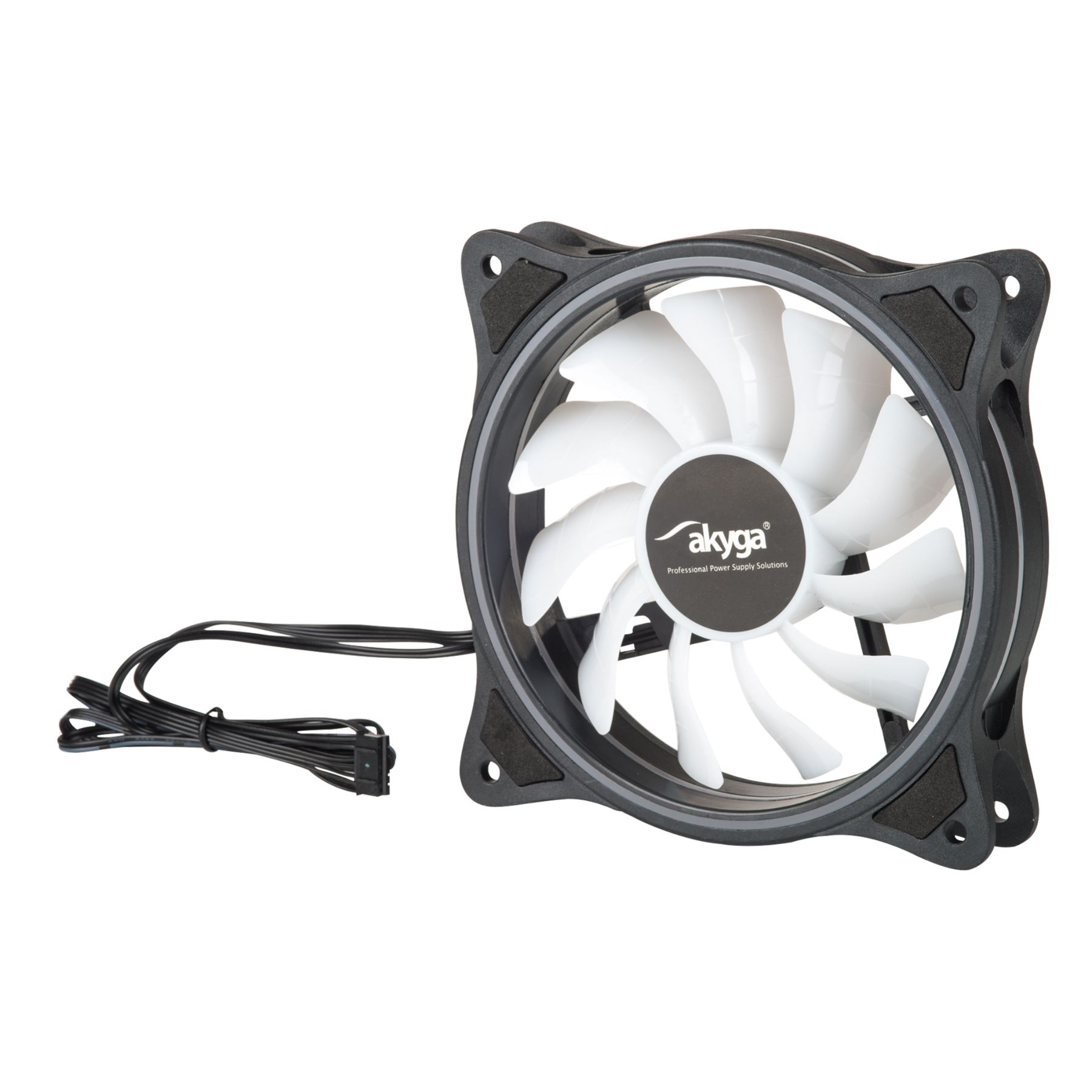Introduction
Case fans are an essential component of any computer system, playing a crucial role in maintaining optimal temperatures and ensuring the longevity and performance of your hardware. These fans help in expelling hot air and drawing in cool air, preventing overheating and safeguarding your precious components from potential damage. However, when it comes to choosing the right case fan, one important factor to consider is the RPM, or revolutions per minute. The RPM determines the speed at which the fan spins and directly affects its cooling performance and noise level.
Understanding the ideal RPM for your case fan is imperative to strike the perfect balance between effective cooling and noise reduction. With a vast range of RPM options available in the market, it can be challenging to determine the optimal speed for your specific needs. In this article, we will explore the importance of case fans, delve into the intricacies of RPM, and provide insight into the factors to consider when choosing the appropriate RPM for your case fan.
By comprehending the significance of RPM and its impact on cooling performance and noise level, you can make an informed decision that best suits your requirements. So, let’s dive into the world of case fans and unravel the mysteries of RPM, guiding you towards choosing the perfect RPM for your case fan setup. Whether you are a gaming enthusiast, a professional content creator, or simply a computer user, understanding RPM will help you optimize the performance and longevity of your system without sacrificing on a peaceful computing experience.
Importance of Case Fans
Case fans are a critical component of any computer system, providing essential cooling to ensure optimal performance and longevity of your hardware. As computer components generate heat during operation, proper cooling is necessary to prevent overheating, which can lead to reduced performance, system instability, and even permanent damage to the components.
Effective cooling is especially crucial for high-performance systems, such as gaming rigs or graphics-intensive workstations, where demanding applications can put a significant strain on the hardware. The heat generated by processors, graphics cards, and other components needs to be efficiently dissipated to maintain their performance and prevent thermal throttling.
Case fans facilitate this cooling process by drawing in cool air from the surrounding environment and expelling hot air out of the case. By improving airflow within the system, case fans help to regulate temperatures and maintain a stable operating environment for the components. They also prevent the buildup of stagnant air pockets, which can further contribute to heat accumulation.
In addition to preventing overheating, case fans also play a crucial role in minimizing the accumulation of dust and other particles inside the system. As air is pulled into the case, the fans help to filter out dust, keeping the internal components cleaner and reducing the risk of performance degradation due to clogged heatsinks or fans.
Furthermore, case fans can contribute to the overall acoustics of the system. While some higher RPM fans may generate more noise, the inclusion of well-designed, quality fans can help optimize the balance between cooling performance and noise level. This is particularly important for users who prioritize a quieter computing experience, such as content creators or individuals seeking a peaceful working environment.
Overall, the importance of case fans cannot be overstated. They are an integral part of any computer system, ensuring that the components can operate at their full potential without the risk of overheating or performance degradation. By actively cooling the system and maintaining optimal temperatures, case fans contribute to both the longevity of the hardware and the overall stability and performance of the computer.
In the next sections, we will delve into the intricacies of RPM (Revolutions per Minute) and explore the factors to consider when choosing the appropriate RPM for your case fans, striking the perfect balance between cooling performance and noise level.
Understanding RPM (Revolutions per Minute)
RPM, short for Revolutions per Minute, is a measurement of rotational speed that indicates how many complete revolutions a fan makes in a minute. It represents the number of times the fan blades or impeller spin around its axis within a given timeframe. RPM is an important specification to consider when choosing a case fan, as it directly influences both the cooling performance and noise level.
The RPM of a case fan determines how fast the blades spin, which affects the amount of air the fan can move and the speed at which it can dissipate heat from the system. Generally, higher RPM values result in more airflow and better cooling performance. However, it is important to strike a balance, as higher RPM fans can also generate more noise.
When the RPM is low, the fan spins at a slower speed, resulting in quieter operation. While this may be desirable for users seeking a quieter computing experience, it can potentially compromise cooling effectiveness, especially in systems with high-performance components that generate a significant amount of heat.
Conversely, fans with higher RPM deliver more airflow, ensuring efficient cooling. These fans are often necessary for systems with demanding applications or overclocked hardware. However, higher RPM fans are typically noisier, as the increased speed of the fan blades generates more air turbulence, leading to an audible whirring or humming noise.
It’s important to note that not all case fan applications require the same RPM. The ideal RPM for your case fan depends on various factors, including the cooling requirements of your components, the available space in your case, and your personal preference for noise levels.
In the next section, we’ll explore the factors that should be considered when choosing the appropriate RPM for your case fans. By understanding these factors, you’ll be better equipped to find the right balance between cooling performance and noise level for your specific needs.
Factors to Consider when Choosing the RPM
When selecting the RPM for your case fan, several factors should be taken into consideration to ensure optimal cooling performance and noise level. By evaluating these factors, you can make an informed decision and choose an RPM that meets your specific requirements. Here are the key factors to consider:
1. Cooling Performance: The primary function of case fans is to provide effective cooling for your system. Therefore, it is essential to determine the cooling needs of your components. High-performance CPUs and graphics cards, for example, may require higher RPM fans to dissipate the heat generated during intensive tasks. Consider the thermal design power (TDP) of your components and their cooling requirements when choosing an RPM.
2. Noise Level: Noise is a crucial factor to consider, especially if you prefer a quieter computing environment or if your system is located in a noise-sensitive area. Higher RPM fans tend to generate more noise due to the increased airflow and the resulting turbulence. If a quieter system is a priority, consider opting for fans with lower RPM values or those specifically designed for quiet operation.
3. Fan Control Options: Some cases and motherboards offer fan control options, allowing you to adjust the RPM of your fans dynamically. This feature can be beneficial when you need more cooling during heavy usage periods and want to reduce fan speed during idle or low-demand tasks. If your system supports fan control, choosing a fan with a broader RPM range provides flexibility in adjusting cooling performance and noise level based on your needs.
4. Case and Space Constraints: The size and layout of your computer case can impact your choice of RPM. Smaller cases, for example, may have limited space or restricted airflow, requiring fans with higher RPM to maintain adequate cooling. Conversely, larger cases with better airflow may allow for lower RPM fans without sacrificing performance. Consider the available space and airflow characteristics of your case when selecting the RPM.
5. Personal Preference: Ultimately, your personal preference matters. Assess your tolerance for noise and your desired balance between cooling performance and noise level. Some users prioritize maximum cooling performance and are willing to tolerate higher noise levels, while others seek a quieter system and are willing to sacrifice a bit of cooling efficiency. Understanding your preference will guide you in choosing the RPM that aligns with your goals.
By considering these factors, you can select an RPM that strikes the right balance between effective cooling and noise level for your specific needs. In the next sections, we will explore different types of case fans and discuss the recommended RPM ranges for various use cases to further assist you in making an informed decision.
Cooling Performance
The cooling performance of a case fan directly relates to its RPM. The speed at which the blades spin determines the airflow generated, resulting in effective heat dissipation from the system. Understanding the impact of RPM on cooling performance is crucial in selecting the right fan for your specific needs.
Higher RPM fans generally produce more airflow, making them suitable for situations where maximum cooling performance is required. These fans can efficiently move a larger volume of air, helping to lower the temperature of your components. They are particularly beneficial for high-performance systems with overclocked CPUs or powerful graphics cards that generate substantial amounts of heat.
On the other hand, lower RPM fans may not offer the same level of airflow as their higher RPM counterparts. However, they can still provide sufficient cooling for systems with less demanding hardware or operating in environments with moderate ambient temperatures. These fans are generally quieter due to their slower spinning speed and are a good choice when noise reduction is a priority.
It’s important to note that cooling performance is not solely determined by RPM. Other factors, such as fan blade design, the number of blades, and the size of the fan, also play a significant role. Fans with larger blades or more blades can move more air even at lower RPMs, enhancing cooling performance. Additionally, efficient airflow management within the case, including proper placement of fans and cable management, can optimize cooling effectiveness.
To determine the optimal RPM for cooling performance, consider the thermal characteristics of your components, the level of heat they generate, and the overall airflow design within your system. Using manufacturers’ specifications, such as the thermal design power (TDP) of your CPU or the heat dissipation requirements of your graphics card, can help guide you in selecting an RPM that provides sufficient cooling performance.
It’s important to strike a balance between cooling performance and noise level when choosing an RPM for your case fans. While higher RPM fans may offer superior cooling, they can also generate more noise. The choice ultimately depends on your specific requirements and preferences. In the next section, we will explore the impact of RPM on noise level and how to choose the appropriate RPM to maintain a comfortable acoustic environment.
Noise Level
When selecting a case fan, the noise level is an essential consideration, especially if you prioritize a quiet computing environment. The RPM of a fan directly affects the amount of noise it generates. Understanding the relationship between RPM and noise level will help you choose a fan that strikes the right balance between cooling performance and acoustic comfort.
In general, higher RPM fans tend to produce more noise. The increased speed at which the blades spin creates more turbulence in the airflow, resulting in a louder operation. This noise can be distracting, especially if you are working in a quiet environment or if you are sensitive to noise. Therefore, if reducing noise is a priority for you, opting for lower RPM fans is recommended.
However, it is important to note that the noise level of a fan is not solely determined by RPM. Factors such as the design of the fan blades, motor quality, and bearing type also contribute to noise generation. Fans with quality craftsmanship and advanced technologies, such as fluid dynamic bearings or noise-reducing blade designs, can offer quieter operation even at higher RPMs.
To determine the appropriate RPM for a quiet computing experience, consider the noise tolerance level you have and the ambient noise level in your environment. Fans with lower RPMs will generally produce less noise, making them suitable for noise-sensitive areas or situations where a quieter operation is desired. However, keep in mind that lower RPM fans might not provide the same cooling performance as higher RPM fans.
Fan control options can also help manage noise levels. If your system supports fan control, you can adjust the RPM manually or through software to find the optimal balance between cooling performance and noise reduction. This allows you to increase the RPM when additional cooling is needed during intensive tasks and lower it during idle times to enjoy a quieter experience.
Additionally, consider the location of your case fans within the system. Placing fans strategically, such as using larger intake fans in front of the case and smaller exhaust fans at the rear, can optimize airflow and reduce noise. Good cable management can also improve airflow and minimize potential fan noise caused by cables obstructing the fan blades.
By considering your noise preferences and the noise-reducing features of different fans, you can select an RPM that aligns with your desire for a quiet computing experience. In the next section, we will explore the various fan control options available to further assist you in managing noise levels effectively.
Fan Control Options
Fan control options provide a convenient way to manage the RPM and noise level of case fans within your system. They allow you to adjust the fan speed dynamically, optimizing cooling performance while maintaining a comfortable acoustic environment. Understanding the available fan control options will help you tailor the RPM to your specific needs.
1. BIOS/UEFI Fan Control: Many motherboards offer fan control options within the BIOS or UEFI settings. This allows you to adjust the fan speed based on temperature thresholds or set a fixed RPM for each fan connected to the motherboard headers. BIOS/UEFI fan control offers basic control functionalities, enabling you to strike a balance between cooling and noise based on your preferences.
2. Fan Speed Controller: Fan speed controllers are hardware devices that sit between the motherboard or power supply and the case fans. They provide manual control over the RPM by allowing you to adjust the voltage supplied to the fans. By turning a knob or using a slider, you can fine-tune the fan speed to achieve the desired cooling and noise level. However, it’s important to ensure compatibility between the fan speed controller and your fans.
3. Software-based Fan Control: Some motherboards come with software utilities that allow for software-based fan control. These utilities provide greater flexibility in adjusting fan RPM and can include advanced features like fan curves, which define the RPM response based on temperature. Software control is convenient, as it allows you to make real-time adjustments within the operating system, but it requires a compatible motherboard and software.
4. PWM (Pulse-Width Modulation): PWM is a fan control technology widely supported by modern motherboards and fans. PWM control adjusts the fan speed by varying the power supply in a rapid on-off fashion. PWM fans have a dedicated fourth pin that enables precise control over RPM through the motherboard’s PWM header. This technology offers efficient and accurate RPM control, allowing for fine-tuning of cooling performance and noise level.
When using fan control options, it’s crucial to strike a balance between cooling performance and noise reduction. During high-demand tasks, such as gaming or rendering, increasing the RPM of the fans can enhance cooling efficiency. Conversely, during idle or low-demand tasks, reducing the RPM can significantly lower noise output without sacrificing cooling performance.
Always ensure that the selected fan control method is compatible with your motherboard and fans. Consult the manufacturer’s documentation or visit their website for specific information on supported fan control options to make the most of your setup.
By utilizing fan control options, you can tailor the RPM of your case fans to your specific requirements, maintaining an optimal balance between cooling performance and noise level. In the next section, we will explore different types of case fans available on the market to further assist you in selecting the right fan for your needs.
Types of Case Fans
When it comes to case fans, there are different types available, each with its own design and characteristics. Understanding the various types of case fans will help you choose the one that suits your specific needs in terms of cooling performance, noise level, and overall compatibility with your system. Here are the most common types of case fans:
1. Sleeve Bearing Fans: Sleeve bearing fans are a popular and cost-effective option. They feature a simple design with a sleeve or sleeve-like bearing that supports the fan’s rotation. While sleeve bearing fans can provide adequate cooling, they may produce more noise and have a shorter lifespan compared to other types.
2. Ball Bearing Fans: Ball bearing fans use small steel balls within the bearing assembly to reduce friction and increase longevity. These fans are more durable and tend to produce less noise compared to sleeve bearing fans. However, they can be slightly more expensive.
3. Fluid Dynamic Bearing (FDB) Fans: FDB fans incorporate a sealed fluid lubricant within the bearing assembly. This design reduces friction, resulting in smoother and quieter fan operation. FDB fans offer improved longevity and are known for their excellent balance between cooling performance and noise level.
4. Magnetic Levitation (ML) Fans: ML fans utilize magnetic fields to suspend the fan rotor, reducing friction and allowing for quiet operation. These fans offer exceptional longevity, noise reduction, and enhanced cooling performance. However, ML fans typically come at a higher price point.
5. PWM Fans: PWM fans, as mentioned earlier in the “Fan Control Options” section, have an additional fourth pin for pulse-width modulation control. They allow for precise RPM control based on temperature changes. PWM fans are highly compatible with motherboards that support PWM fan headers and provide efficient and accurate control over cooling performance and noise level.
6. RGB Fans: RGB fans are an aesthetic addition to your system, featuring built-in LEDs that can be customized to display various colors and lighting effects. These fans come in different bearing types and provide both cooling and visual enhancements. RGB fans often require additional wiring and software control to manage the lighting effects.
When selecting a case fan, consider the specific requirements of your system, including cooling needs, noise preferences, budget, and compatibility with your motherboard and fan control options. Evaluating the different types of case fans will assist you in making an informed decision that satisfies both your functional and aesthetic preferences.
In the next section, we will explore the recommended RPM range for different use cases, helping you further refine your selection based on specific computing requirements.
Recommended RPM Range for Different Uses
The optimal RPM for case fans can vary depending on the specific use case and cooling requirements of your system. The following recommendations provide a general guideline for selecting the RPM range based on different computing needs:
1. Standard Desktop Use: For a standard desktop PC used for everyday tasks such as web browsing, word processing, and multimedia consumption, case fans operating in the range of 800 to 1200 RPM should suffice. This range provides sufficient airflow for cooling without generating excessive noise.
2. Gaming and High-Performance Systems: Gaming rigs and high-performance systems with overclocked CPUs and powerful graphics cards generate significant amounts of heat. In such cases, case fans operating in the range of 1200 to 1800 RPM or higher may be needed to ensure proper cooling. However, it’s crucial to consider noise levels as higher RPM fans tend to be louder.
3. Workstations and Content Creation: Professional workstations or systems utilized for content creation tasks such as video editing or 3D rendering can benefit from higher RPM fans. Aim for an RPM range of 1600 to 2000 RPM to maintain optimal cooling for sustained intensive workloads. Again, ensure noise levels are in an acceptable range for your preferences and workspace environment.
4. Silent or HTPC (Home Theater PC) Systems: For users who prioritize a quiet computing environment, low RPM fans in the range of 600 to 1000 RPM are recommended. This range provides sufficient airflow for cooling while minimizing noise output, making it suitable for HTPC setups or systems in noise-sensitive areas.
It’s important to note that these recommended RPM ranges are general guidelines and can vary based on factors such as the specific components, case design, ambient temperature, and personal preferences. Additionally, implementing proper case fan configuration, including intake and exhaust placement, and ensuring adequate clearance for unrestricted airflow, can significantly impact cooling performance regardless of the RPM range chosen.
Take advantage of fan control options available in your system to fine-tune the RPM based on real-time temperature monitoring or adjust fan curves to dynamically respond to changing heat levels. This flexibility allows you to optimize cooling performance while maintaining a comfortable acoustic environment.
By considering your specific computing needs and the recommendations provided, you can select the optimal RPM range for your case fans, striking the perfect balance between effective cooling and noise level to ensure a stable and comfortable computing experience.
Conclusion
Choosing the right RPM for your case fans is crucial in maintaining optimal cooling performance and managing noise levels in your computer system. By understanding the importance of case fans, the impact of RPM on cooling performance and noise level, and considering factors such as cooling requirements, noise preferences, and available fan control options, you can make an informed decision that best suits your specific needs.
When selecting the RPM for your case fans, consider the thermal characteristics of your components, the available space within your case, and your personal preferences for noise level and cooling performance. High RPM fans can offer excellent cooling potential, especially for high-performance systems, but they may generate more noise. Lower RPM fans, on the other hand, can provide a quieter operation, but they may sacrifice cooling efficiency in demanding situations.
It’s important to strike a balance that suits your specific use case. Optimal RPM ranges may vary depending on the type of system you have, such as a standard desktop, gaming rig, or content creation workstation. Additionally, the type of case fans, such as sleeve bearing, ball bearing, fluid dynamic bearing, or magnetic levitation, can also impact cooling performance and noise levels.
Take advantage of fan control options like BIOS/UEFI settings, fan speed controllers, or software-based controls to fine-tune the RPM according to the specific demands of your system. These options enable you to adjust the fan speed dynamically, optimizing cooling performance when needed and reducing noise during idle or low-demand periods.
By carefully considering these factors and recommendations, you can choose the RPM that strikes the perfect balance between cooling performance and noise level, enhancing the longevity and performance of your hardware while providing a comfortable computing environment.
Remember, it’s essential to maintain proper airflow and case fan configuration within your system to maximize cooling effectiveness. Regularly clean your fans and ensure unrestricted airflow by managing cables and maintaining a clean computer case.
Selecting the ideal RPM for your case fans ensures that your system operates smoothly and efficiently, keeping temperatures in check and preventing issues related to overheating. Invest time and research into choosing the right RPM for your case fans, and enjoy a well-cooled, quiet, and high-performing computer system.







